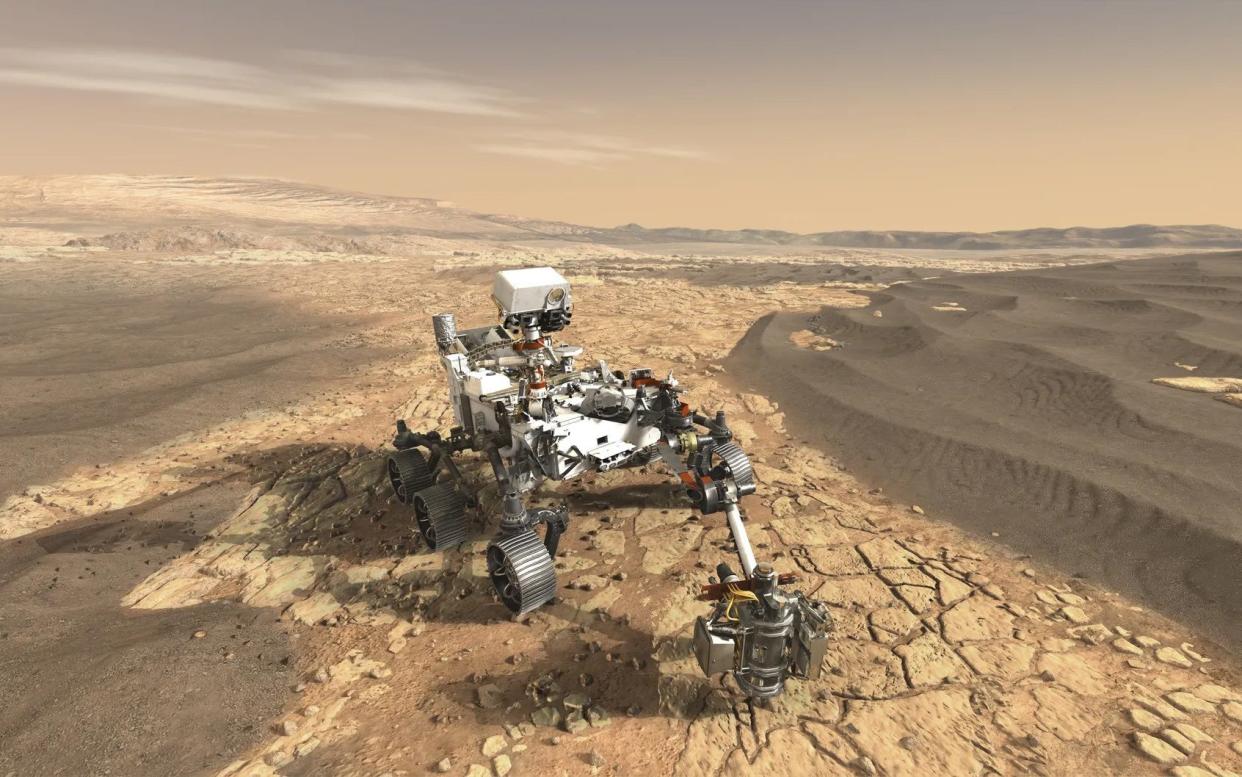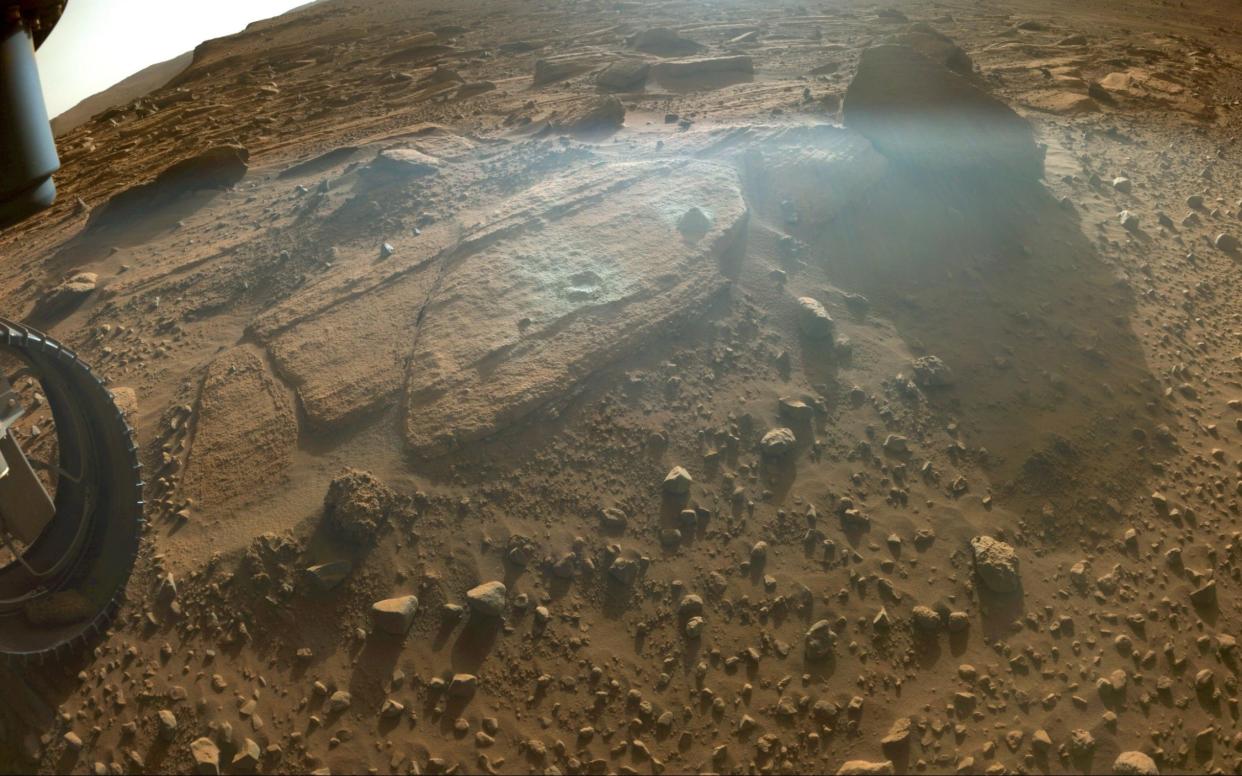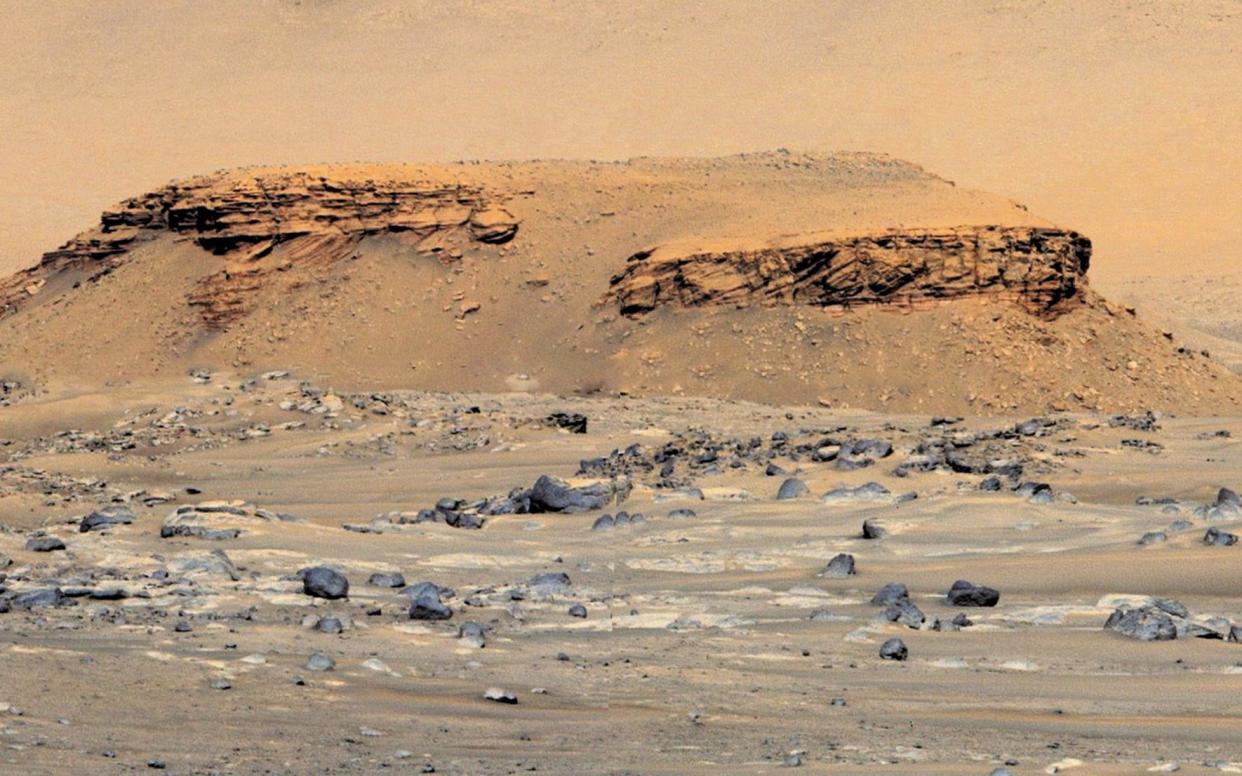Nasa: samples could prove life on Mars – but we can’t afford to bring them home

Nasa has admitted it cannot afford to bring back Mars samples that could prove life once existed on the red planet.
Since 2022, Nasa’s Perseverance Rover has been drilling into the Martian surface, collecting rock and dust, some of which has been left in capsules on the surface.
The samples could hold traces of ancient anti-microbial species that would prove that life has evolved somewhere other than on Earth.
The US space agency had originally planned to send a separate rover or helicopter to collect the sample tubes, which would then be fired up to an orbiting spacecraft, and brought back to Earth by 2040.
But this week, Nasa said it could no longer afford the $11 billion return mission and called for new ideas on how to get the samples back more cheaply in the 2030s.

“Mars Sample Return will be one of the most complex missions Nasa has ever undertaken,” said Bill Nelson, the Nasa administrator.
“The bottom line is an $11 billion budget is too expensive, and a 2040 return date is too far away.
“Safely landing and collecting the samples, launching a rocket with the samples off another planet – which has never been done before – and safely transporting the samples more than 33 million miles back to Earth is no small task.
“We need to look outside the box to find a way ahead that is both affordable and returns samples in a reasonable timeframe.”
Nasa said it was critical to get the samples back more quickly because humans may soon be travelling to Mars, so knowing more about the surface and climate is vital to keeping astronauts safe.
Perseverance has been drilling down at the Jezero Crater, the site of an ancient lake, which experts believe holds the best chance of finding evidence of fossil life.

It was originally planned that Perseverance would leave the samples on the surface for a European Space Agency Sample Fetch Rover to collect and take to the Mars Ascent Vehicle, from where they would be fired into space.
But the mission has run into multiple funding problems and in 2022, the British-built Sample Fetch Rover was scrapped despite already costing the UK £22.7 million.
Engineers at Airbus in Stevenage, Hertfordshire, had spent four years designing the rover when Nasa announced that Perseverance would deliver the samples to the ascent vehicle itself.
If the rover failed, two new helicopters would be sent to collect backup samples left on the surface, Nasa said at the time. But now the revised plan is also in doubt.
Earlier this month, Perseverance collected its 24th sample in the Jezero Crater, where scans of outcrop suggest the rock contains minerals that formed in water and are microcrystalline in structure, giving a greater chance that signs of life could be found inside.
“The silica and parts of the carbonate appear microcrystalline, which makes them extremely good at trapping and preserving signs of microbial life that might have once lived in this environment,” said Sandra Siljeström, a Perseverance scientist from the Research Institutes of Sweden in Stockholm.
“That makes this sample great for biosignature studies if returned to Earth. Additionally, the sample might be one of the older cores collected so far by Perseverance, and that is important because Mars was at its most habitable early in its history.”
Nasa said the mission remained a “top priority” but warned it could not be accomplished within the planned budget. It is expected that several billion dollars will need to be shaved off the cost.
The space agency said it would be working on a revised plan and also wanted proposals from industry about how to get the samples back sooner and at a lower cost, including making a slimmed-down Mars Ascent Vehicle.
Nicky Fox, associate administrator of the Science Mission Directorate at Nasa headquarters in Washington, said: “Our next steps will position us to bring this transformational mission forward and deliver revolutionary science from Mars – providing critical new insights into the origins and evolution of Mars, our solar system, and life on Earth.”


